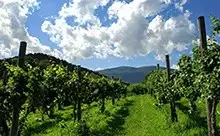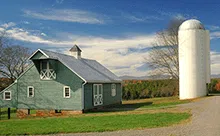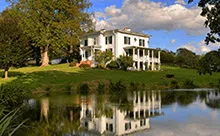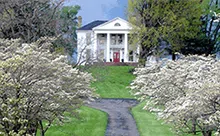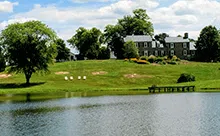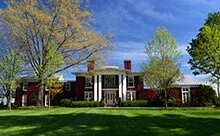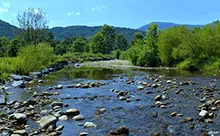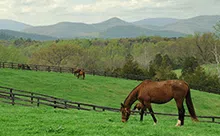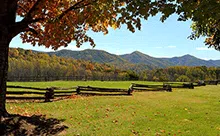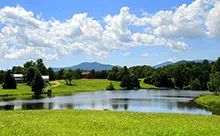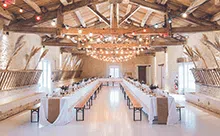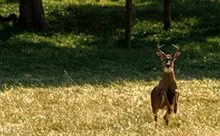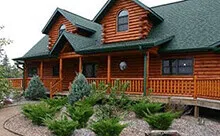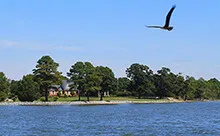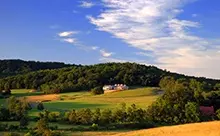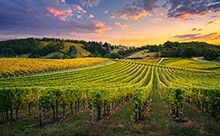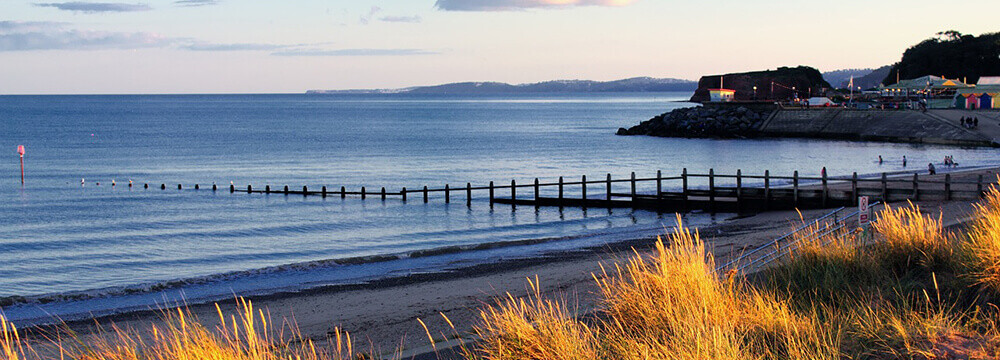
Category: Virginia Estates’ Blog
Buying a Home in Virginia: 3 Towns
Buying a Home in Virginia: 3 Towns
If you are looking to buy a home in The Old Dominion (Virginia) and aren’t certain where to begin your search, below you will find information about 3 of the most prosperous towns in Virginia. The towns that I will introduce to you have a median income well above the national average with unemployment and poverty rates well below the national average. All three towns are relatively small, safe and family friendly with plenty to do. All are within commuting distance of Washington DC.
Vienna, Virginia
Vienna is located just over 15 miles outside of Washington DC making it an easy commute to the city. It is a charming historic town with a population of just over 15,000 people, but don’t let it’s smaller size fool you, there is plenty to do. Vienna’s vibrant historic downtown is alive with locally owned restaurants and delightful mom and pop shops. It is very easy to get around the downtown area as well as to outlying attractions thanks to the amazing variety of hiking, walking and biking trails to be found including the 4.1 miles of trail that is a part of the old W&OD Railroad Track. Vienna is also home to the beautiful Meadowlark Botanic Garden. The garden has lots of meandering walking paths, plentiful benches and is also home to the lovely Korean Bell Garden. The Meadowlark Botanical Garden is a beautiful place to spend an afternoon or even an entire day. You can wander through the many beautiful gardens while admiring views of the Piedmont Hills. Just outside of the town of Vienna you will find the Wolf Trap National Park for the Performing Arts. The park is the only national park dedicated to performing arts. It is home to a 7,000 seat performing arts theatre and is located on 117 acres of land providing plenty of space for educational programs and long beautiful hikes.
Leesburg
The town of Leesburg is home to approximately 53,000 people and is located about 40 miles outside of Washington DC. The town of Leesburg is full of history and has one of the best preserved historic downtowns in Virginia. The town though, small in size, is big on things to do. Leesburg is home to 65 restaurants and 250 retail shops. After all of that shopping you can relax with an ice cold locally brewed beer. According to a recent article in the Washington Post, Leesburg is the craft beer capital of Virginia. When not walking the beautiful downtown area, shopping or eating a meal in one of the town’s many restaurants head over to Morven Park. Morven Park is home to 4 museums: The Davis Mansion, The Winmill Carriage House, The Museum of Hounds and Hunting of North America and Turkey Hill Farm. In order to tour the museums you must buy a ticket. The Davis Mansion provides a docent to guide you, the other 3 museums are self guided. There are 1,000 acres of lawns, fields and formal gardens as well as the lush green lawns and rolling hills adjacent to the Davis Mansion. When you are finished with your visit at the park be sure to visit the nearby Stone Tower Winery for a relaxing glass of wine.
Purcellville
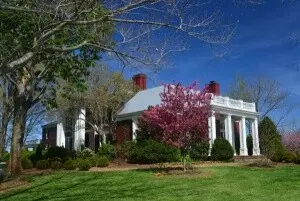 The final town on our list is also the smallest: the historic town of Purcellville. Purcellville has a population of 10,500 and is located 50 miles outside of Washington DC. Like Vienna and Leesburg, Purcellville is also anchored by its thriving and beautifully historic downtown. The town is known for weekend antiquing and has amazing consignment and thrift shops. The W&OD Railroad Track that passed through Vienna, with it’s paved trails and bike paths, continues its journey through Purcellville where the trail ends at the recently restored Purcellville Train Station. Downtown Purcellville is home to a variety of restaurants and independently owned shops including a renowned whiskey distillery Catoctin Creek Distilling Company. Becky Harris, co-owner of the distillery, is “the greatest female whiskey maker in America” according to Wine and Country Magazine. For a day of outdoor activities, make your way to Franklin Park. Franklin Park is 203 acres and provides spaces for tennis, fishing, swimming and baseball fields. The park is also home to the Franklin Park Performing and Visual Arts Center which has something for everyone with it’s regularly scheduled professional and community performances, gallery exhibits and workshops.
The final town on our list is also the smallest: the historic town of Purcellville. Purcellville has a population of 10,500 and is located 50 miles outside of Washington DC. Like Vienna and Leesburg, Purcellville is also anchored by its thriving and beautifully historic downtown. The town is known for weekend antiquing and has amazing consignment and thrift shops. The W&OD Railroad Track that passed through Vienna, with it’s paved trails and bike paths, continues its journey through Purcellville where the trail ends at the recently restored Purcellville Train Station. Downtown Purcellville is home to a variety of restaurants and independently owned shops including a renowned whiskey distillery Catoctin Creek Distilling Company. Becky Harris, co-owner of the distillery, is “the greatest female whiskey maker in America” according to Wine and Country Magazine. For a day of outdoor activities, make your way to Franklin Park. Franklin Park is 203 acres and provides spaces for tennis, fishing, swimming and baseball fields. The park is also home to the Franklin Park Performing and Visual Arts Center which has something for everyone with it’s regularly scheduled professional and community performances, gallery exhibits and workshops.
Vienna, Leesburg and Purcellville, 3 thriving, safe, family friendly Virginia towns that provide the best that the state has to offer. Cultural events, fine dining, independent shops, as well as history all located just down the road from our nation’s capital. Where will you put down roots?
Oceanfront Virginia
Buying your first home is a dream come true. When that dream is to buy a coastal home in Virginia here are some things to consider:
~Where do you want to live and what do you want from your town?
Big city oceanfront living:
Maybe you are the type of person who wants your home base to have a lot of energy and plenty to do.The largest city in Virginia,Virginia Beach, with a population of 425,000, may be just what you are looking for. Virginia Beach has 3 miles of boardwalk and a gorgeous beach. In the summer Virginia Beach is full of energy as people take advantage of the many stores, restaurants and bars. You can also enjoy live music, theater and a thriving art scene.
Small town with plenty of outdoor activity:
Looking for a quiet town with a lot of outdoor activities? You should look at Sandbridge. In this small coastal Virginia town you will find plenty of activities both in and out of the water. Visit False Cape State Park where you can explore a small historic town, camp by the beach and hike. You can also enjoy the beautiful barrier islands, maritime forests and over 8,000 miles of scenic trails at the nearby Back Bay National Wildlife Refuge. If you prefer water activities then you can swim in Sandbridge’s calm ocean waters, fish off the pier or go boating.
An Historic Gem for rest and relaxation:
If you dream of a small town living with a big dose of history, you should consider buying a home in the town of Onancock. The town was founded in 1680 and is home to stunning Victorian homes, charming boutique shops and amazing galleries. You can spend a leisurely late afternoon by the wharf watching the boats and remain to enjoy an evening meal watching an amazing sunset.
~ What type of home are you looking for?
Quaint Cottage by the water:
Your dream may be to buy a small cottage near the ocean. When buying a home near the ocean, you will want to consider how close you want to be to the water. Do you want to be able to step out of your front door and see the ocean and hear the waves or are you ok with walking a short distance to the beach? You also want to keep in mind how much land is around your home. Do you mind having close neighbors or would you prefer to spend more and have a bit more privacy. If you love to entertain, would you prefer quick access to the beach, a patio with an ocean view or a large open indoor space?
Luxurious Waterfront Condo:
Perhaps you have always wanted an oceanfront home with a patio that will allow you to watch the city’s twinkling lights. A condo on the boardwalk may be your dream home. A condo in Virginia Beach will allow access to the many amenities of city living. You can step out of your front door and access a 3 mile long boardwalk and a gorgeous beach. You will also be living within walking distance of great restaurants, bars and coffee shops.
Luxurious Home with all the Amenities:
A luxury home near the ocean offers you the best of all worlds. You can find a luxury home that gives you that hotel living feeling everyday. Spend your days relaxing by your beautiful infinity pool and eat your meals on your beautiful patio in privacy. Your home will be an oasis from the hustle and bustle of city life. When you want to join in on the party atmosphere of the city night life, you will be only a short drive away and your luxury home will be there when you return to envelop you in peace and tranquillity once again.
Coastal Virginia is a beautiful area to buy a home. With its history, natural beauty, art scene and party vibe there is something for everyone on the coast of Virginia. Where will you live?
Luxury Home Trends 2021
2020 was the year that everything changed. Everyone stayed home unless they were essential and our homes became work, school and relaxation spaces. In 2021 restrictions have lifted however our year inside has changed the way many of us live and has heavily influenced what people are looking for when buying luxury homes.
The Home Office:
 With restrictions continually in flux, many who worked in an outside office have chosen to continue to work from home. Many are looking to make adjustments in their current homes to create a quiet/separate space from the rest of the house. Those who are looking to buy a new luxury home have shifted away from the open floor spaces of old and are looking for a separate space to call their home office. These rooms need to be zoom worthy as most meetings are conducted online. Those who work remotely have begun to create a bright, sunny cosy atmosphere to help dispel the gloom of the past year.
With restrictions continually in flux, many who worked in an outside office have chosen to continue to work from home. Many are looking to make adjustments in their current homes to create a quiet/separate space from the rest of the house. Those who are looking to buy a new luxury home have shifted away from the open floor spaces of old and are looking for a separate space to call their home office. These rooms need to be zoom worthy as most meetings are conducted online. Those who work remotely have begun to create a bright, sunny cosy atmosphere to help dispel the gloom of the past year.
- Furniture is chosen for its ability to live inside or outside of the office space. In a multipurpose home duel purpose furniture reigns.
- Accent walls are created using paint, wallpaper or a beautiful bookcase to assist with creating a zoom worthy backdrop to meetings.
- Accent light in the form of table lamps or standing lamps are positioned near the computer to place you in the best lighting possible.
With so much of our time being spent inside/at home, many are leaving the city to find their perfect luxury home in the suburbs complete with wide swaths of green land that can provide the homeowner with the feeling of time spent in nature while still allowing them to feel safe and comfortable. To this end, many home buyers are looking for spaces that allow the outdoors – indoors.
- Windows located in living spaces are large and left untreated or treated with sheer treatments to allow for ample sunlight to stream into the space.
- Doors are large and open completely allowing for the lines between indoor and outdoor spaces to blur.
- Creating a relaxing, cosy environment has become paramount and faux sheepskin rugs, soft throws and warmly scented candles help to create an environment in which you want to spend time relaxing.
Luxury home buyers want to continue to entertain safely and responsibly. This means small groups of close friends and family and time outside as much as possible. Large expanses of green area can provide the nature fix you desire but it is the small cosy areas you will need for simple gatherings that feel special.
- Hot tubs and swimming pools are on the list of wants for the new home buyer. Large sized and located outside they provide space for distancing and fresh air that will help everyone feel safe while providing a bit of luxurious pampering.
- A fire pit allows for spacious gathering outside in the evening when the weather turns cold. It’s warm glow and camp out feel keeps things cosy and feeling special.
- A large patio located off of the main house allows for a small group to feel as though they are invited to an indoor gathering. Furniture that resembles in house furnishings rather than outdoor patio furniture furthers the illusion of being invited into someone’s home for an intimate get together.
As we move through 2021, it is no secret that the events of the past year have caused us all to look at how we live our lives. A large Luxury Home with expansive green grounds can provide us the space and comfort we need. At no other time has it been more apparent that our home is truly our safe haven.
Virginia’s Trails Are More Than Just Dirt
There are many well-worn trails in Virginia. When one hears the word trail, their brain most often instinctively conjures up images of dirt and rock surrounded by trees, maybe a stream crossing here or there, and an overlook or vista at the end of your trek. The most famous, the Appalachian Trail, comes to mind. We’ll cover that, and several must-see hiking trails, but there are themed destinations, driving, paddling, and riding trails as well that are less known, often overlooked, but just as exciting and interesting, and you’ll find plenty of trails that are more than just dirt here in Virginia.
African American History in Virginia
African Americans have played a part in Virginia’s history since they first stepped foot on its soil and there are several dozen sites all across the state that honor them and tell their story. You can begin your journey on the Richmond Slave Trail, which educates visitors on the demanding hardships and terrible things slaves were forced to endure. You’ll start the by docks and markets that fueled the slave trade, work your way through several important places in Richmond, and end at First African American Church. Finish your visit with a trip to the Black History Museum and Cultural Center of Virginia, which highlights the culture and history of African Americans in Virginia. If you’re out and about across the state, other African American historical highlights include the Appalachian African-American Cultural Center in Pennington Gap, the Booker T. Washington National Monument and Plantation Trail in Hardy, the Freedom House Museum in Alexandria, or learn about some of the first black aviators at the Virginia Air and Space Center in Hampton. If you’re interested in the Civil Rights movement, the Robert Russa Moton Museum in Farmville was the site of the first non-violent protests which culminated in the Brown vs. Board of Education Supreme Court decision. These places are just a fraction of the locations where you can learn about and walk in the footsteps of Virginia’s African Americans.
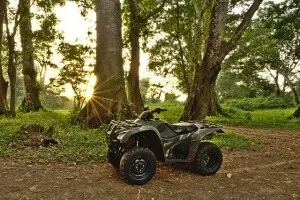
ATV Trails To Boost Your Adrenaline in Virginia
If you have an ATV and are living in or visiting Virginia, you’re in luck. Thanks to the foothills and mountains of the Blue Ridge Mountains and Shenandoah Valley there are trails for the novice and experienced rider alike, offering a combination of varying terrain, great scenery, and picture worthy views. For days of fun from dawn till dusk, head to Virginia’s largest connected trail system, the Spearhead Trails. With over 400 miles of connected trails, including the recent connection to the Hatfield-McCoy trails in West Virginia, it would be easy to spend a weeklong vacation in this location, but there are plenty more to explore. Jefferson National Forest and George Washington National Forest, both, have incredibly remote ATV and OHV trail systems. The South Pedlar ATV Trail System near Big Island is nineteen miles in length and primarily passes through dense woods. Moto Cove Off-roading in Gore is an ATV park with a few dozen trails with rough terrain and challenging obstacles. If you’re brand new to ATV riding, Appalachian Adventures in Luray has guided instructional rides for beginners and ATV rentals available.
Autumn Activities in Virginia
Get lost in a corn maze or get spooked on a haunted trail! Corn mazes are great family-friendly fun for families and groups of all ages and sizes. Coincidentally, many corn mazes are co-located with pumpkin patches. Take a hayride, carry off some pumpkins to carve when you get home, and don’t forget those cute gourds the little ones love. Liberty Mills Farm in Somerset is the largest corn maze in the state of Virginia. Each year, the maze has a different theme with an associated trivia game of hidden questions throughout it. If you’re up for the challenge and can answer each question correctly, you’ll be rewarded. Other corn mazes across Virginia are located Berkeley Plantation in Charles City, Crab Orchard Corn Maze and Pumpkin Patch in Tazewell, Owen Farm in Danville, Skeeter’s Maze in Waynesboro, Temple Hall Farm Regional Park in Leesburg, and Valley Star Farm in Luray.
Would your family and friends say you’re brave? Or would you let out a grimacing scream at the first ghoul you encounter? Virginia has numerous haunted trails full of creatures, ghosts, goblins, monsters, and all things that fill your worst nightmares. Check out The Death Trail in Dumfries, Haunted Hill Trail in Partlow, Scream Forest in Glen Allen, Shadows of Shockoe in Richmond, and Terror Woods in Chesapeake. If the weather isn’t cooperating visit the sights that will make you scream inside, at one of Virginia’s haunted houses. Haunted Nightmares in Winchester, Madam Redrum’s in Waynesboro, Shocktober in Leesburg, Spooky Acres in Portsmouth, St Albans Sanatorium in Radford, and The Warehouse in Weber City are all consistently rated very high. You don’t, however, need to wait until Halloween to trek through a supposedly haunted location. Just east of Buena Vista, the Appalachian Trail crosses Bluff Mountain. Over a century ago, four year-old Ottie Powell got lost in the woods and unfortunately perished in the elements. For decades, hikers have reported sights of Ottie. If you’re up for it, spend the night in Punchbowl Shelter on the AT, which some hikers elect to bypass due to the superstitions surrounding the area. Visitors to Civil War battlefields, where countless soldiers died, have also reported strange occurrences taking place when the sun goes down.
If your inner compass isn’t the greatest or you’re just a little feint of heart when it comes to all things scary, Virginia still has you covered in the fall. Thanks to the varying elevations and weather, leaf-peeping usually begins in early October and lasts through most of November. That’s almost two full months of amber, brilliant yellow, and fiery orange and red. By nature’s design, the leaf-peeping begins at the higher elevations in the southern and western portions of the state. When the trees are bare and brown on Whitetop Mountain, the color is in full swing in Richmond, and the trees are turning in Virginia Beach.
Two of the most popular destinations to view the leaves in Virginia are The Blue Ridge Parkway and Skyline Drive. From both of these there hundreds of miles of accessible trails ranging in length from short, level loops to overnight hikes of dozens of miles with several climbs and descents. The Mountain Trail Farm at the visitors center (MP 5), Wigwam Falls at the Yankee Horse Trail Overlook (MP 34), Abbott Lake Trail at Peaks of Otter Lodge (MP 85), and the Mountain Industry Trail located at the picturesque Mabry Mill (MP 176) are all easy, short walks. For trails a little more moderate in length, try Humpback Rocks Loop (MP 5), Otter Creek and Lake Loop (MP 63), or the Smart View Loop (MP 154). If you’re used to hiking longer distances, St Mary’s Falls (MP 20) and Rock Castle Gorge Loop (MP 169) are both over ten miles in length.
Shenandoah National Park has over 500 miles of trails accessible from Skyline Drive at the top and numerous fire roads and parking areas from the base of the mountains. If you go for the leaves, however, be prepared for company. October is Skyline Drive’s busiest month, and for good reason. Shenandoah National Park is split into three sections and all three offer great choices to see the trees bursting with color for everyone’s different hiking capabilities. In the North District, Fox Hollow Loop (MP 4) and For Windham Rocks (MP (10) are easy hikes that are good for novices and families with children. Little Devils Stairs from the park’s boundary is strenuous, but offers a gorge, rock scramble, and stream crossings. In the Central District there are multiple easy, short hikes. In fact, instead of one longer hike, some visitors enjoy taking a few or several short hikes to afford them the opportunity to see more of Shenandoah National Park. Blackrock Viewpoint, Stony Man Trail, and Story of the Forest Trail are all within a half-hour drive of one another. The Limberlost Trail is a favorite with kids and is even ADA accessible. Dark Hollow Falls, Old Rag, Upper Hawksbill, and White Oak Canyon are the most frequented moderate to strenuous trails. The Southern District has Blackrock Summit as an easy Track Trail For Kids, which offers stunning 360 panoramas. Who doesn’t love a waterfall surrounded by vivid colors? Try Doyles River and Jones River Falls trails. Don’t forget to check out the Shenandoah National Park webpage by the National Park Service for almost endless possibilities. If you’ve hiked it once in the summer, it’s a completely different environment in the fall.
Virginia has city, county, private, and state parks and nature preserves scattered throughout the Commonwealth. Chances are, no matter where you are in Virginia, you’re not more than a half-hour drive from any of these. With dirt, gravel, and even paved paths and trails, parks and preserves are a great way to walk among the autumn leaves. Some of the favorites include Belle Isle State Park, Douthat State Park, Fairstone State Park, Grayson Highlands State Park, Hungry Mother State Park, Maymont, Natural Bridge State Park, Newport News Park, Oak Grove Park, and Powhite Park.
Adult Beverage Crusades
In the past decade or so, the small craft brewery, cidery, and distillery scenes have exploded in Virginia. If you take a drive in the Piedmont and Shenandoah Valley regions of the state, you’ll also notice more vineyards and wineries are popping up. Beer trail? Bourbon Trail? Wine trail? Yes, please! Get out and go sample some drinks. Responsibly, of course! Let’s start with the beer. There are almost two dozen beer trails in Virginia that include just about every brewery in every city, town, and off the beaten path place from the mountains to the Atlantic Ocean. The Beltway Beer Trail, as the name suggests, takes you on a journey visiting over twenty breweries in Northern Virginia near Washington, D.C. The Brew Ridge Trail, Nelson 151 Trail, and Red, White, and Brew Trail take you to breweries in Virginia’s Blue Ridge Mountains. Shenandoah Beerwerks Trail and Shenandoah Spirits Trail follow the Valley from Front Royal to Lexington. Coastal VA Beer Trail and Toast the Coast VA are all breweries you’ll find on the Peninsula and Southside region of Hampton Roads. Richmond is one of the fastest growing beer scenes in Virginia and on the Richmond Beer Trail there are over twenty breweries to explore.
On to the distilleries. Whether you want to sample a flight or a glass on the rocks, mixed drink, or purchase a bottle for yourself or as a gift, Virginia has some brand new and tried and true distilleries to visit. A. Smith Bowman Distillery is the oldest in the state and has won “World’s Best Bourbon” several times. Wood’s Mill Distillery just North of Lovingston opened only a few years ago but always sells out of their Apple Brandy quickly. Other fun destination distilleries include Catoctin Creek Distillery- the first opened in Loudoun County since before Prohibition, Copper Fox Distillery in Sperryville and Williamsburg- where you can purchase a barrel kit to age your own beverages from home, Franklin County Distilleries- located in the “moonshine capital of the world”, or Virginia Distillery Company- where you can learn about the history of distilling in Virginia at their museum.
There are over 300 wineries in Virginia, and more are being added every year. The Chesapeake Bay Wine Trail takes you through some of the first regions of Virginia and historically important places along Virginia’s Northern Neck and Middle Peninsula. Purchase a ticket for the Grapes and Grains Trail in the Fredericksburg and Lake Anna region and visit four wineries and a distillery. Included in the price of the ticket are tastings and 10% purchases. More than twenty wineries dot the landscape in the Shenandoah Valley, surrounded by battlefields, farms, plantations, mountains, and quaint towns on the Shenandoah Wine Trail. The mother of all wine trails, the Monticello Wine Trail, allows you to “discover the birthplace of American wine” while touring over thirty wineries in the Piedmont and foothills of the Blue Ridge. More than half of Virginia’s vineyard acres are located along this tour.
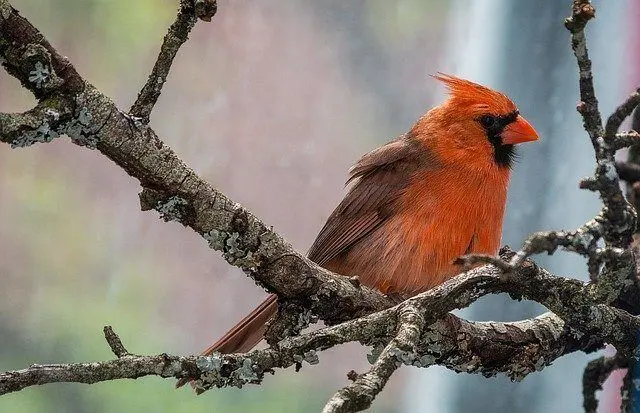
Virginia Bird and Wildlife Trails
Nature abounds in Virginia from the peaks of the Appalachian mountains in the southwest reaches of the state to the surf breaking on the sand of the Atlantic Ocean beaches almost six-hundred miles east. Did you know it would take ten hours (non-stop) to drive from Ewing, Virginia to Assateague Island National Seashore? The Virginia Department of Wildlife Resources has several dozen bird and wildlife trails categorized into three distinct regions: Coastal, Piedmont, and Mountain. While numerous species of birds, fish, mammals, and reptiles overlap, you’ll most certainly find those that are only specific to each location as well. The Seashore to Cypress loop makes stops through Chesapeake and Virginia Beach, visiting places such as Bay Bay National Wildlife Refuge, False Cape State Park, First Landing State Park, and the Norfolk Botanical Garden. If your feet are too tired to walk the more than ten miles of paths and trails at Norfolk Botanical Garden, you can ride the tram or take a boat tour! Popular Piedmont Region loops include the James River Loop, Monticello and Rivanna Loop, and Staunton River Loop. Looking for a place to spot wildlife that has picnic facilities, playgrounds, restrooms, river beach access, scenic overlooks, and trails? Pleasant Grove Park in Fluvanna County, just west of Palmyra, has all of that and more. It’s easy to spend the entire day at this almost 1,000 acre park, and it’s free for public use! The Mountain Region has the most loop trails and visits popular places such as Big Stone Gap, Mount Rogers, Peaks of Otter, and Skyline Drive. The Allegheny Highlands Loop, Appalachian Wonders Loop, Daughters of the Stars Loop, and Lost Shoe offer something off the beaten path. Looking for an incredibly elusive animal? Head out to Big Cedar Creek on the Saint Paul Loop and test your habit knowledge while trying to find the rare hellbender. Short and long hikes, small and large animals- you’ll find all of those and more on Virginia Bird and Wildlife Trails.
Virginia Blueways
Want a calm, serene, unique way to see some of the best natural beauty Virginia has to offer? Float it or paddle it! Take your canoe, kayak, raft, or tube and get on the water. If you don’t own one, there are several outfitters on the Clinch River, James River, New River, Rappahannock River, Rivanna River, Shenandoah River, and others that will drop you off at a designated put-in and pick you up at the take-out location. The Upper James River Water Trail begins in Clifton Forge and meanders down sixty miles of river. No need to be an expert paddler as most rapids are Class I-II, although there are a few Class III for those looking for something a little more challenging. The New River Water Trail is almost forty miles of designated water with several locations to put in or take out, leaving you options for shorter and longer trips. The Southern Virginia Wild Blueway contains segments of the Roanoke River, Dan River, and the Banister River. If you’re looking for more open water options, the Virginia Seaside Water Trail has you paddle the bays around Assateague and Chincoteague Islands and Great Machipongo River. A simple Google search will provide you with even more float and paddle opportunities.
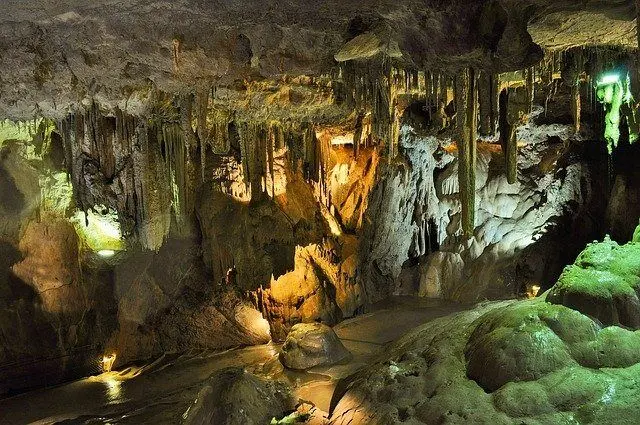
Virginia’s Caverns
Take it underground. On a sultry summer day or a wet and windy winter day, you may not want to brave the elements but you’re still itching to get out of the house. Virginia has over half a dozen caverns open to public touring. With a constant comfortable temperature, caverns are a great place to beat the heat in the summer and escape the chill of winter. Luray Caverns are the largest and most popular caverns in the state. Visitors can view multiple large chambers filled with stalagmites, stalactites, towers, reflecting lakes, and the world’s largest musical instrument- the Great Stalacpipe Organ. Also in the Shenandoah Valley you’ll find Endless Caverns, Grand Caverns, Natural Bridge Caverns, Shenandoah Caverns, and Skyline Caverns. Dixie Caverns near Roanoke and Gap Caverns in Cumberland Gap National Park round out the list.
Christmas Displays in Virginia
It’s hard not to get in the Spirit of Christmas when houses, city streets, and small-town businesses begin to put up bright lights and decorations. Across Virginia, there are so many great places to drive or walk through to view magnificent displays. Going on almost thirty years of operation, the Celebration in Lights at Newport News Park is Virginia’s longest-running drive-through light display. In approximately two miles, you’ll see over 350 static displays, fifty arches, and three miles of rope lighting. While you’re in the Historic Triangle and Hampton Roads area, take a drive on the Virginia Beach Boardwalk to see Holiday Lights at the Beach, the Dominion Garden of Lights at the Norfolk Botanical Garden, or walk through Christmas Town at Busch Gardens. In Northern Virginia, at Bull Run Regional Park, the Bull Run Festival of Lights is over two miles long and includes a Christmas Carnival and Holiday Village with children’s activities and shopping. In Richmond, the Dominion Energy Gardenfest of Lights at Lewis Ginter Botanical Garden features Christmas decorations, lights, activities and food.
Virginia Civil War Trails
Although debatable, Virginia is considered by most to be the preeminent location to learn, see, or study the Civil War. The first and last major battles of the Eastern theater of the war, along with countless other skirmishes and entire campaigns, were fought right here in Virginia. The grounds between Richmond and Washington, D.C. saw loss like no other. To the unfamiliar, a battlefield may seem just that, a field of tall grass in the middle of some unknown locale. To those who have been, there’s so much more to offer. Historical context reigns with signs, markers, monuments, and interpretive trails. Driving tours follow timelines of events with interspersed stops; some with elaborate, lengthy trails. Others have a simple plaque noting what took place. Campaigns you can follow include the Crossroads of Conflict 1861-1865, the Peninsula Campaign of 1862, Lee vs Grant 1864, Lee’s Retreat 1865, and more. Battlefields such as Brandy Station, Gaine’s Mill, Petersburg, Spotsylvania Courthouse, Sailor’s Creek, and The Wilderness offer days of endless exploration.
At Manassas National Battlefield Park, walk on the Stone Bridge over the gently flowing Bull Run, over a few hundred yards of wooden planks, up the hill to the footprint of the Van Pelt house, and be rewarded with a view over the eastern portion of the battlefield. Hike the entire 5.5 mile Spotsylvania History Trail over open land and streams, through forests, by several farm ruins, and try to grasp the ferocity of the fighting at Bloody Angle. Visit the rows of cannon at Malvern Hill. At Five Forks Recreational Trail System there are joint use trails for biking, hiking, and horseback riding with interpretive markers explaining the movements and significance of the fighting that took place. From the visitors center at Fredericksburg National Battlefield Park, walk the Sunken Road Walking Trail past part of the original stone wall that lined the road, which Confederates used for cover when firing down towards the Rappahannock River as Burnside’s Union Army of the Potomac crossed in wave after failed wave. Looking for something a little more challenging? Hike up the steep trail to the top of Sittlington’s Hill at McDowell Battlefield in western Virginia. If these aren’t enough, you don’t have to look very hard many more that may be closer to you, as there wasn’t hardly a county in Virginia whose land wasn’t touched by the Civil War.
The Crooked Road
If you’re a fan of bluegrass or country music, this is the driving trail for you. If you’re not, The Crooked Road is still a great drive for picturesque landscapes and interesting rural small-town stops. Twenty-five wayside exhibits through nineteen Virginia counties comprise the experience of the birth and tradition of American music. At each stop, look at the pictures, read the history, and tune in your radio to the corresponding FM station and listen to the recordings and a sampling of music. Along the way, major venues that hold large festivals, jam sessions, and nights of pickin’ are must-sees. One of the largest, Floydfest, brings in people from across the country for five full days of music. Bring your camper and pack some lawn chairs. Visit Big Walker Country Store or Floyd Country Store for evenings of a bygone era. For a full historical music experience covering centuries, check out the Blue Ridge Music Center just off The Blue Ridge Parkway at Milepost 213 near the town of Galax.
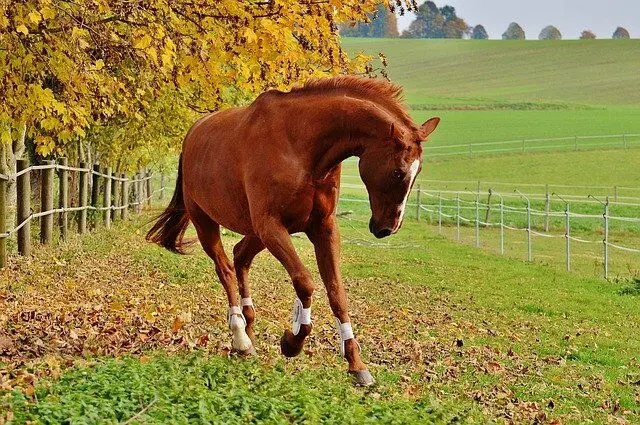
Horsing Around Virginia
Forests and parks in every region of Virginia have horse trails for every rider. There are fee and free-use trails that range from just a few miles to almost 250 miles and terrain varies just as much. Forests and balds in the mountains and meadows and water down low, Virginia’s horse trails have it all. Many even allow camping. James River State Park in Buckingham County has two equestrian campgrounds with stalls. Douthat State Park, Fairy Stone State Park, Grayson Highlands State Parkand Occoneechee State Park also all have campsites with stalls. Backcountry campsites are scattered throughout the George Washington and Jefferson National Forests. One popular method to tour the Gettysburg National Battlefield Park in Pennsylvania is by guided horseback tours. In Virginia, Bristow Station Battlefield Heritage Park, Five Forks Battlefield, Manassas Battlefield National Park, and Petersburg National Battlefield Park all have designated horse trails. If you’re looking for an adventure reminiscent of the days of early explorers through dense woodlands with primitive camping, head out to the Mount Rogers Ranger District where you’ll find 278 miles of trails. If it’s hot in the lowlands, head up to the Blue Ridge Mountains in Shenandoah National Park where it’s notably cooler. By contrast, if it’s cold in the mountains, take a ride in the southeastern portion of the state on the Dismal Swamp Canal Trail in Chesapeake or West Neck Creek Natural Area in Virginia Beach. Wherever you are in Virginia, you’re always near a great location to saddle up.
Motorcycle Madness
If you own a motorcycle, the central and western portions of Virginia are nothing short of a playground. Foothills, mountains, hairpin turns and sweeping curves are all that a biker could ask for. There’s the obvious iconic Blue Ridge Parkway and Skyline Drive, which most riders are well aware of, but in the southwest portion of Virginia, several notable loops and routes are gaining popularity. Appalachian Backroads has developed several rides with multiple points of interest, great places to eat, and of course, lots of curves. The Back of The Dragon runs from Hungry Mother State Park to Tazewell on Route 16. Thirty-two miles of blacktop hold 438 curves up and down several mountain ranges and ridgelines. Make sure you know yours and your bike’s capabilities so you don’t drag boards or pegs too much on Cliff Hanger, Frame Bender, and Zero Gravity Curves. Stop and take a break at Million Dollar View. Other mapped rides include Bootlegger, Heartbreaker, RoadRUNNER, and Skull Cracker, among others. On these roads you’ll pass through the towns of Big Stone Gap, Burkes Garden, Castlewood, Ewing, Gate City, and Grundy in the rural Heart of Appalachia.
Virginia’s Rail Trails
As old logging and other railroad lines had run their useful course, the cuts made to lay the track still existed. What could be done with them? The infrastructure was already in place, so make them into trails, of course! Virginia has several short and long rail trails that are perfect for long or short walks, hikes, or rides. The Blue Ridge Railway Track Trail in Nelson County, made from packed gravel, begins in Piney River and runs for 6.5 miles, ending at the Tye River Depot. The Chessie Nature Trail following the Maury River for seven miles from Lexington to Buena Vista is “A Rail-Trail for All Ages.” Guest River Gorge Trail, in extreme southwest Virginia just outside of Coeburn, follows the river through woodlands and 300-million year old rock formations. High Bridge State Park is on a portion of a 31 mile rail trail near Farmville. The namesake, a historic bridge constructed in 1853, is half a mile long, spanning the Appomattox River 160 feet above. The James River Heritage Trail is a wonderful mix of rural and urban settings as it wanders through wooded nature areas and downtown Lynchburg along it’s eight mile length. New River Trail State Park covers almost sixty miles of trail through Carroll, Grayson, Pulaski, and Wythe counties. Following one of the oldest rivers in the world, the New (ironic name, huh?), you’ll pass by points of historic interest (Shot Tower), several falls, over bridges, and through tunnels. There are even primitive camping sites,picnic shelters, and restroom facilities along the trail. The most well known rail trail in Virginia is probably the Virginia Creeper Trail. The trail runs 34 miles from the top of Whitetop Mountain to the town of Abington. Bike outfitters will transport you and your own bike, or rented bikes, to the top so you can enjoy the seventeen mile shallow downhill grade all the way into Damascus.
Tunnel Trails of Virginia
Weather made by man or Mother Nature, there’s not much that’s not neat about tunnels and you’ve got several to choose from in Virginia if you want to go exploring. The fruits of a culmination of years of fundraising, planning, and restoration efforts have finally paid off and the Claudius Crozet Blue Ridge Tunnel is set to open to the public soon. Connecting Augusta and Nelson counties at Rockfish Gap on Alton Mountain, the railroad tunnel took eight years to construct from 1850-1858. Over 4,000 feet in length, it was the longest railroad tunnel in the US when it was completed. Natural Tunnel State Park, in the heart of Appalachia, has been called the eighth wonder of the world. A natural limestone tunnel made over thousands of years, railroad companies saw its potential for use and so laid some track. While you’re down there, check out Bee Tunnel, which is listed as the shortest trail toss tunnel in the world. Take a stroll on the paved Blackwater Creek Trail in Lynchburg and walk through the 500 foot Hollins Mill Tunnel. On the New River Trail, ride or walk through tunnels. Just want to drive through one? Big Walker and East River Mountain Tunnels on I-77 near the Virginia/West Virginia border are both around one mile long. On the complete opposite side of the state in the Chesapeake Bay Bridge Tunnel. Along with two one-mike tunnels, it’s constructed of man-made islands and twelve miles of bridges. Don’t forget to stop at the pier and get a plate of fresh blackened flounder.
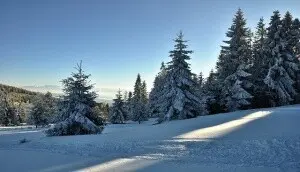
Winter Wonderland Trails of Virginia
While the options are somewhat limited compared to the Rockies, Virginia does have a few cross country skiing trails available. Just outside the “Capital” of the Appalachian Trail, Damascus, four trails: Cabin Creek Trail, Horse Trail (east), Old Upchurch Road, and Seed Orchard Road prodive almost ten miles of cross country skiing. Also, did you know that when the Blue Ridge Parkway and Skyline Drive are closed for winter weather conditions, cross country skiing is permitted on the closed sections? While you’re there, bring your snowshoes or winter boots for a unique experience hiking in the snow. With no leaves, the field of view allows you to see more you otherwise can’t, and with snow-covered ground, see how many animal tracks you can identify and you’ll be amazed at how many creatures are still very active in the winter. Looking for something a little faster and all downhill? Virginia has four ski resorts and one year-round artificial snow complex. Bryce Resort in Bayse has eight slopes and a tubing park. Massanutten Resort near Harrisonburg has fourteen slopes, a twelve lane tubing park, and a skating rink. The Omni Homestead has nine trails, a tubing park, an ice skating rink, and mini snowmobiles for young children. The largest, Wintergreen Resort near the top of The Blue Ridge Parkway in Nellysford, has twenty-four slopes and eight lane pubing park.
Virginia’s Wonderful Waterfalls
There are some amazing waterfalls scattered across the Blue Ridge mountains of Virginia. If you’re looking for a challenging hike to one, you’ll find it. If you’d rather do a drive by, well, you can do that too. Water cascading over cliffs, down chutes, and into pools is calming to the soul, soothing to the eyes, music to the ears, and you could spend days visiting them all. If you live near the mountains, you’re always only a short drive away from a waterfall. Even if you’re a city-dweller, you’re within a two hour drive, with the exception of those east of Richmond. One of the tallest waterfalls, Falling Spring Falls in the Alleghany Highlands, just outside of Covington, has a steady flow of water year round. It’s about a fifty yard walk from the parking lot to the viewing area and can even be seen from the road. Staton Creek Falls is a series of cascades in which several can also be seen from the road. If you’re interested in taking a hike to see waterfalls, White Oak Canyon in Shenandoah National Park has six different waterfalls, while Dark Hollow Falls is one of the most picturesque and popular waterfall hikes in the park. Don’t forget Doyles River Falls, Hazel Falls, Overall Run Falls, and South River Falls. Along and near the Blue Ridge Parkway, Apple Orchard Falls, Crabtree Falls, Saint Mary’s Waterfall, and White Rock Falls are popular hikes, though that list is not inclusive of all the waterfall hikes to choose from. A must see near Washington, D.C. is Great Falls National Park, where the Potomac River accelerates and crashes though the fall line before entering the tidal basin. Waterfalls with fairly easy hikes are Cascade Falls just outside Pearisburg, Less Falls in Natural Bridge State Park, Mine Bank Falls near Steeles Tavern, Roaring Falls near Eagle Rock, and Scotts Run waterfall in McLean.
Virginia From Above
I’m fortunate to live in Central Virginia where the rolling hills of the Piedmont act as an artificial border between the eastern and western portions of the state. It’s less than an hour drive to the Blue Ridge Parkway or Shenandoah National Park and a little over a two hour drive to the Atlantic Ocean at Virginia Beach, with tons to explore in between and beyond. I’m an avid biker (motorcyclist) so therefore, by default, I enjoy road trips. I use the bike more as a tool than I do as a toy, so I can explore and see different parts of the state. I’m a pilot by trade and both offer unique opportunities to view Virginia from above.
I’m more of a mountain man than a city slicker, which is a little contradicting since I spend a few days a week in busy airports and big cities. I appreciate the fact that Virginia has some of the best of both. There are beautiful mountains that please the eye and soul and great cities with so much to do. Whether riding on meandering, winding blacktop along the peaks and ridge lines of mountains or looking down from 30,000 feet inside the cockpit, I’m constantly in awe and reminded of how fortunate I am to live in such a wonderful location. Some of the sights I see might not necessarily be unique to Virginia, but I still wouldn’t want to live anywhere else.
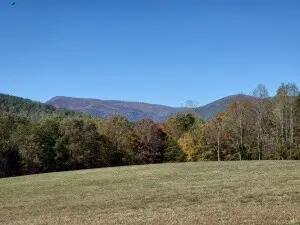 Most people don’t realize how expansive Virginia really is. From the Easten Shore on the Atlantic Ocean to the far western reaches of Appalachia in Southwest Virginia is a distance of over 400 miles. Depending on what route you take, there are just five states between Virginia and California. When flying on an arrival in Washington, D.C. or New York City from the southeastern states, oftentimes we fly right over Buckingham County, the geographical center of Virginia. In the winter months when the cold, dense air allows for almost unlimited visibility, at night you can see the lights of Cape Charles to the east and pinkish-orange lights on the ski slopes at Snowshoe, West Virginia simultaneously. In other words, you can see across the entire state of Virginia, and beyond. Just by the lights, I can pick out Blacksburg, Charlottesville, Culpeper, Harrisonburg, Lynchburg, Norfolk, Richmond, Roanoke, Staunton, Waynesboro and dozens of other towns. I can touch them all with my fingertip from a single location.
Most people don’t realize how expansive Virginia really is. From the Easten Shore on the Atlantic Ocean to the far western reaches of Appalachia in Southwest Virginia is a distance of over 400 miles. Depending on what route you take, there are just five states between Virginia and California. When flying on an arrival in Washington, D.C. or New York City from the southeastern states, oftentimes we fly right over Buckingham County, the geographical center of Virginia. In the winter months when the cold, dense air allows for almost unlimited visibility, at night you can see the lights of Cape Charles to the east and pinkish-orange lights on the ski slopes at Snowshoe, West Virginia simultaneously. In other words, you can see across the entire state of Virginia, and beyond. Just by the lights, I can pick out Blacksburg, Charlottesville, Culpeper, Harrisonburg, Lynchburg, Norfolk, Richmond, Roanoke, Staunton, Waynesboro and dozens of other towns. I can touch them all with my fingertip from a single location.
Have you ever witnessed two sunsets? The sunsets over the Blue Ridge make magical moments for anyone watching from their backyard, office, or a plane. One evening, while taxiing out of Charlottesville for our departure to Chicago, the sun slowly dropped below the Appalachian Mountains, casting a shadow on everything to the east. The sun had set. A few minutes later, we took off and as we climbed the sun reappeared on the western horizon before dipping below the Allegheny Mountains, which were now directly in front of us. The sunrises can be equally dramatic. Early morning departures out of Newport News, Norfolk, and Richmond or Washington, D.C. when eastbound provide vivid pastel hues in the sky while the first rays of sun hitting the Atlantic Ocean and the Chesapeake Bay flicker like thousands of shimmering specks of gold.
Flying over the Chesapeake Bay between the mainland and Eastern Shore is a trest itself, no matter the time. The constantly shifting sandbars give birth to different depths of water before they’re washed away and rebuilt in a different location. The changes in the water’s coloration is sometimes more reminiscent of what one would expect in the Caribbean. Deep and light blues are mixed in the greys and purples with the yellow and white sand. After heavy rains, the flooded rivers that deposit their dirt, mud, and silt into the Bay turn it an ugly brown, but by nature’s design, it will soon return to its pristine image worthy of a wall-mounted canvas.
Speaking of muddy waters, have you ever seen a single river that runs as two? The Meeting of Waters (Encontro das Aguas) is the confluence where the Rio Negro runs into the Amazon River in Brazil. For several miles, the black and brown river waters do not mix and the rivers appear to flow as separate bodies of water. The same is true after heavy rains affect one of either of the Potomac and Shenandoah Rivers. The confluence of these two rivers is in Harpers Ferry, West Virginia where downstream the Potomac forms the border between Maryland and Virginia all the way to the Chesapeake Bay. When one river is running red with mud and the other is clear, below the confluence the rivers seemingly run as two distinct rivers, rather than the one it actually is. It’s quite a sight to see.
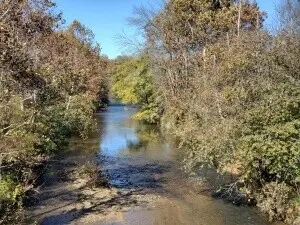 Virginia is home to several medium and large-sized recreational lakes. During the warmer months and especially around holidays, the hundreds or even thousands of people on the waters of Claytor Lake, John H. Kerr Reservoir, Lake Anna, and Smith Mountain Lake can easily be seen from a high cruising altitude. With a sharp eye, at lower altitudes, one can pick out brightly colored canoes, kayaks, or rafts floating down slow-moving rivers. On clear days in Virginia, you can truly understand how watersheds work. Flying over Central Virginia, if you know where to look, you can locate Beautiful Run. Beautiful Run empties into the Robinson River, which runs into the Rappahannock River, which runs into the Chesapeake Bay, before emptying into the Atlantic Ocean north of Virginia Beach. In the western portion of the state Camp Creek dumps into Little River, which empties into the New River, which becomes the Kanawha River at the confluence with the Gauley, before merging with the Ohio, ending up in the Mississippi, and thus its terminus in the Gulf of Mexico. How crazy is it to think that a drop of water from a small creek in southwest Virginia can end up in the Gulf of Mexico?
Virginia is home to several medium and large-sized recreational lakes. During the warmer months and especially around holidays, the hundreds or even thousands of people on the waters of Claytor Lake, John H. Kerr Reservoir, Lake Anna, and Smith Mountain Lake can easily be seen from a high cruising altitude. With a sharp eye, at lower altitudes, one can pick out brightly colored canoes, kayaks, or rafts floating down slow-moving rivers. On clear days in Virginia, you can truly understand how watersheds work. Flying over Central Virginia, if you know where to look, you can locate Beautiful Run. Beautiful Run empties into the Robinson River, which runs into the Rappahannock River, which runs into the Chesapeake Bay, before emptying into the Atlantic Ocean north of Virginia Beach. In the western portion of the state Camp Creek dumps into Little River, which empties into the New River, which becomes the Kanawha River at the confluence with the Gauley, before merging with the Ohio, ending up in the Mississippi, and thus its terminus in the Gulf of Mexico. How crazy is it to think that a drop of water from a small creek in southwest Virginia can end up in the Gulf of Mexico?
While we’re still on the topic of water, did you know Virginia has several ferries? Ferries don’t often come to one’s mind when they’re contemplating how to get around some of the water communities of Virginia. The Jamestown-Scotland Ferry has two boats that run continuously. Tangier Island Cruises and the Tangier-Onancock Ferry will transport you from the Eastern Shore or the Northern Neck to the tiny fishing island in the middle of the Chesapeake Bay. You can drive in a tunnel under the water, or take a ferry across the Elizabeth River between Norfolk and Portsmouth. White’s Ferry, just north of Washington, D.C. crosses the Potomac River, guided by cables. The Potomac Water Taxi in Alexandria gives tours around D.C. One of the reasons I love flying into New York City on a nice day is to see all the boats and ferries, including the gigantic orange Staten Island Ferries, darting to and fro with long lines of wake zig-zagging into each other. While obviously not as dramatic in Virginia, I still enjoy watching all of the boats out in the water.
One of the neatest things to witness is the arrival or departure of a fleet of Navy ships coming in or going out of Norfolk Naval Station, the largest naval base in the world. It gives me goosebumps to think of the mighty power of an entire carrier group sailing. While the carrier is the crown jewel of the fleet, amphibious assault ships, combat ships, destroyers, landing ships, patrol ships, and transport ships make up the entire group. The whitewater wake churned up lasts for miles. More often than not, Seahawk helicopters are flanking the convoy on most sides. One of the most awesome sights I’ve seen while flying occurred just off the coast of Virginia. Flying down to Norfolk from New York one night, the Navy was engaged in live-fire exercises. Red tracers were shooting high into the sky and we could see orange bursts on the horizon line, which we assumed were the large deck guns being fired. For the passengers, it was certainly a once in a lifetime opportunity to witness that type of show.
Flying above Virginia is kind of like a virtual pass to your own contour map of the state. It develops a greater appreciation for the hills, mountains, rivers, and the geological forces that have created this great place. Burkes Garden is a place that you can read about, but if you haven’t been inside of it, or flown over it, it’s difficult to actually grasp the features of the surrounding terrain. Sometimes I spend quite a bit of time looking out of the window trying to find places on the ground I’ve been or places I want to explore. I’m always looking for new locations to go for a bike ride, camp, fish, float a kayak or canoe, or hike. I’ve even scoped out distilleries, orchards, pumpkin patches, and wineries I didn’t know existed. All from simply looking out of the window. When I hike to the top of places like Old Rag Mountain, the summit of Bearfence Mountain, or the face of Stony Man Mountain, it puts the accomplishment into greater perspective when viewed from above.
Taking off out of Charlottesville, Roanoke, Tri-Cities, or even Richmond and D.C. headed westbound on foggy mornings gives you the feeling like you are on top of the world, which in a sense you are when flying. Since fog layers are usually just a few hundred to several hundred feet thick, you rapidly pop out on top leaving the rest of the world out of view, except the magnificent hills and mountains which are clearly visible. It’s quite a sight to behold and when atmospheric conditions are perfect for the formation of fog in the valleys, it’s one of my favorite views. Sometimes I’ll leave at first light on a bike trip up to the Blue Ridge Parkway or Skyline Drive when it’s foggy at home. Sure, the bike gets trashed from the mixing of the water vapor and road grime, but it’s 100% worth it when riding on top of the fog under a clear, sunny sky.
We’re lucky in Virginia to have four distinct seasons. I’m even luckier because I get to witness the changes each season brings from an aerial perspective. It’s a toss up between fall and spring if asked what my favorite season is. I love mid-October through mid-November when the leaves across the state are changing. When I was a Flight Instructor at Charlottesville-Albemarle Airport, each year a sorority from UVA would come out for aerial tours of the Blue Ridge when the leaves on the mountains were at their peak. For two days straight I’d do nothing but fly over the mountains. On a flight from Washington-Dulles to Roanoke one November, I amended our final altitude to less than half as high as we usually flew. Our standard filed route took us right over Skyline Drive and the Blue Ridge Parkway most of the way. We flew low and a little slow just to take in the scenery. Have you ever done a corn maze? There are several in Virginia every year and some, such as Liberty Mills Farm in Somerset, carve out a different themed design every year. Is it cheating if I take a picture from the air and then go try it?
In the winter, after a heavy snow, if I’m lucky enough to fly over when the skies have cleared and a full moon is out, the reflection of the snow lights up the ground almost as clear as the sun during the day. Snow and ice capped trees at the higher elevations, whose cold air keeps the winter precipitation lingering when it has melted below, reminds me of the Rockies, whose snow can often be seen year-round. If you like Christmas lights, they’re even better from the air!
In the spring, as crops grow, the Piedmont and Shenandoah Valley become a patchwork quilt of colors. In the southeastern portion of the state, fields of white indicate the cotton bolls have bloomed. The mountains burst with pink, purple, and white flowers. Spring turns to summer too quickly for me, but who doesn’t love fireworks? You know what makes them even better? Watching them from the sky. Flying around the Fourth of July is reminiscent of an active battlefield. For as far as you can see in every direction there are mini explosions and flashes of every color of the rainbow.
I grew up in the country, yet I find myself in cities all the time for work. Cities are their own wonders of engineering feats with tall skyscrapers and fancy architectural marvels, which I thoroughly enjoy staring at in amazement. Flying over the Golden Gate Bridge in San Francisco, the Gateway Arch in Saint Louis, the Sears Tower of Chicago, or by the Washington Monument in D.C. never gets old. Notice I said “by” the Washington Monument. The airspace over Washington, D.C. is prohibited to enter by anyone other than authorized military personnel and woe to the wayward pilot that violates that! But… I still live in and love the rural areas of Virginia. Flying over rural parts of the state almost makes me feel as though I’m not at work, but still close to home, which in a sense, I am. In the spring, it’s easy to spot flocks of snow white sheep in bright green fields. In the evening, long lines of cows can be seen heading back to the barns. The rectangular housing of chicken and turkey farms can be easily visible for fifty miles. Cut rows of hay and combines harvesting corn remind me even in the sky, I’m still connected to the land.
In contrast to all the beautiful things to see over Virginia, nature’s devastation can be amazing in its own way. I’ve flown over the state after hurricanes have dumped copious amounts of water causing the rivers to swell well beyond their banks. Viewing fields, houses, streets, and everything in between under water from the air gives greater understanding of powers that humans can not hold back. I’ve seen paths tornadoes have cut through woods. Several years ago, while climbing out of D.C., I flew over a forest fire in the central section of Shenandoah National Park where fire crews were having difficulty gaining the upper hand. It was a clear day and the burn area was clearly visible, minus what the smoke was covering. I took some pictures and sent them to the park and they were very grateful, telling me they would be using them for the next command briefing.
There are so many things I haven’t touched on; Civil War battlefields, plantations on the James River, mile long coal trains hugging the New River, and much more. If you’ve ever lived in Virginia, you’re already aware of everything it has to offer. If you’re simply flying over Virginia, you’ll probably see something that will pique your curiosity. If you’ve never done either, you don’t know what you’re missing!


















